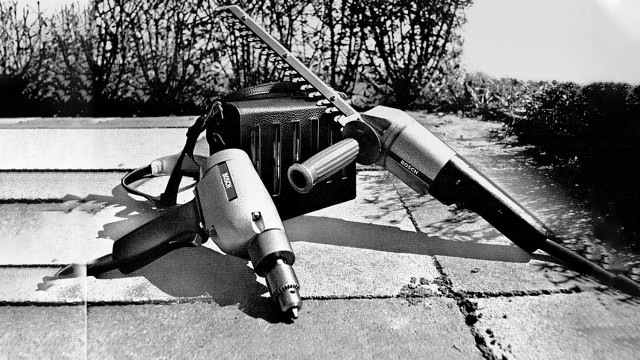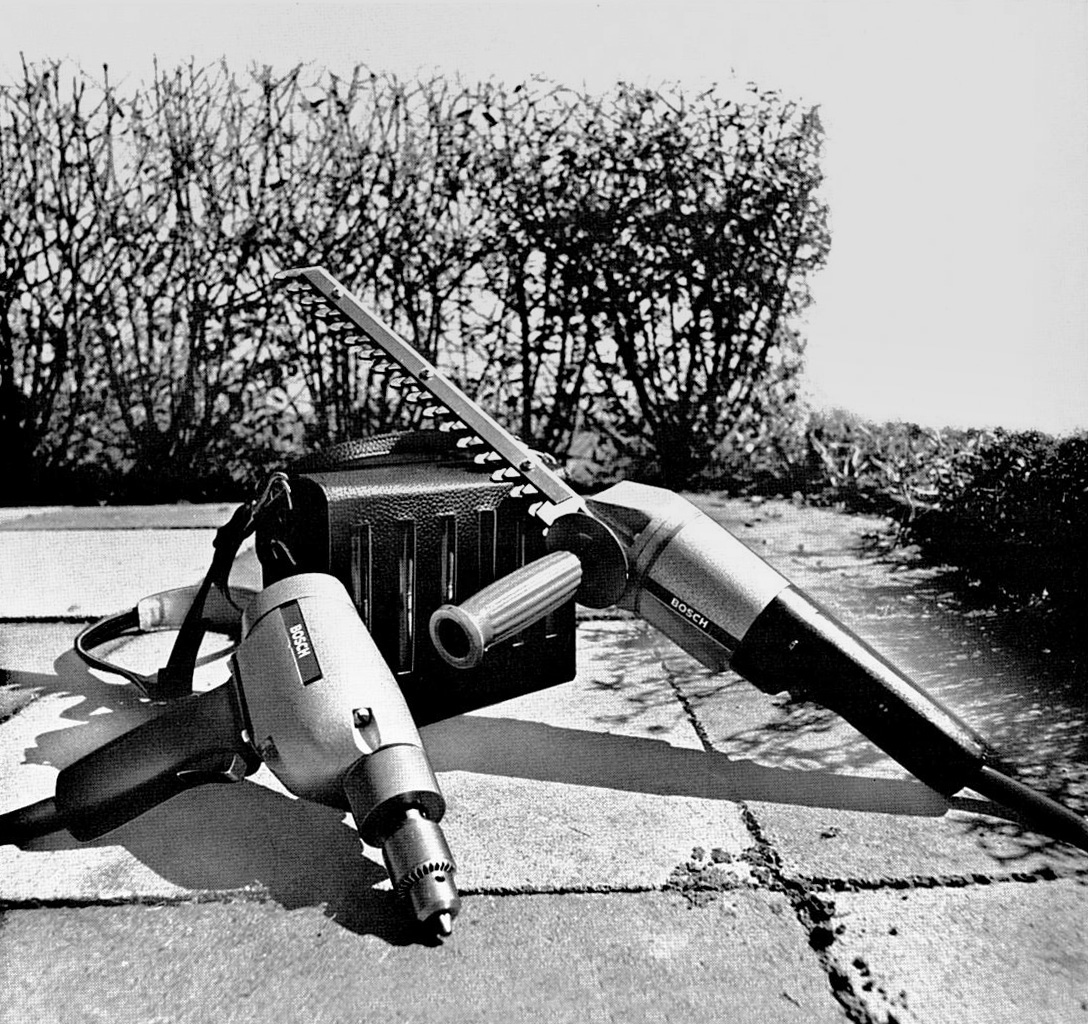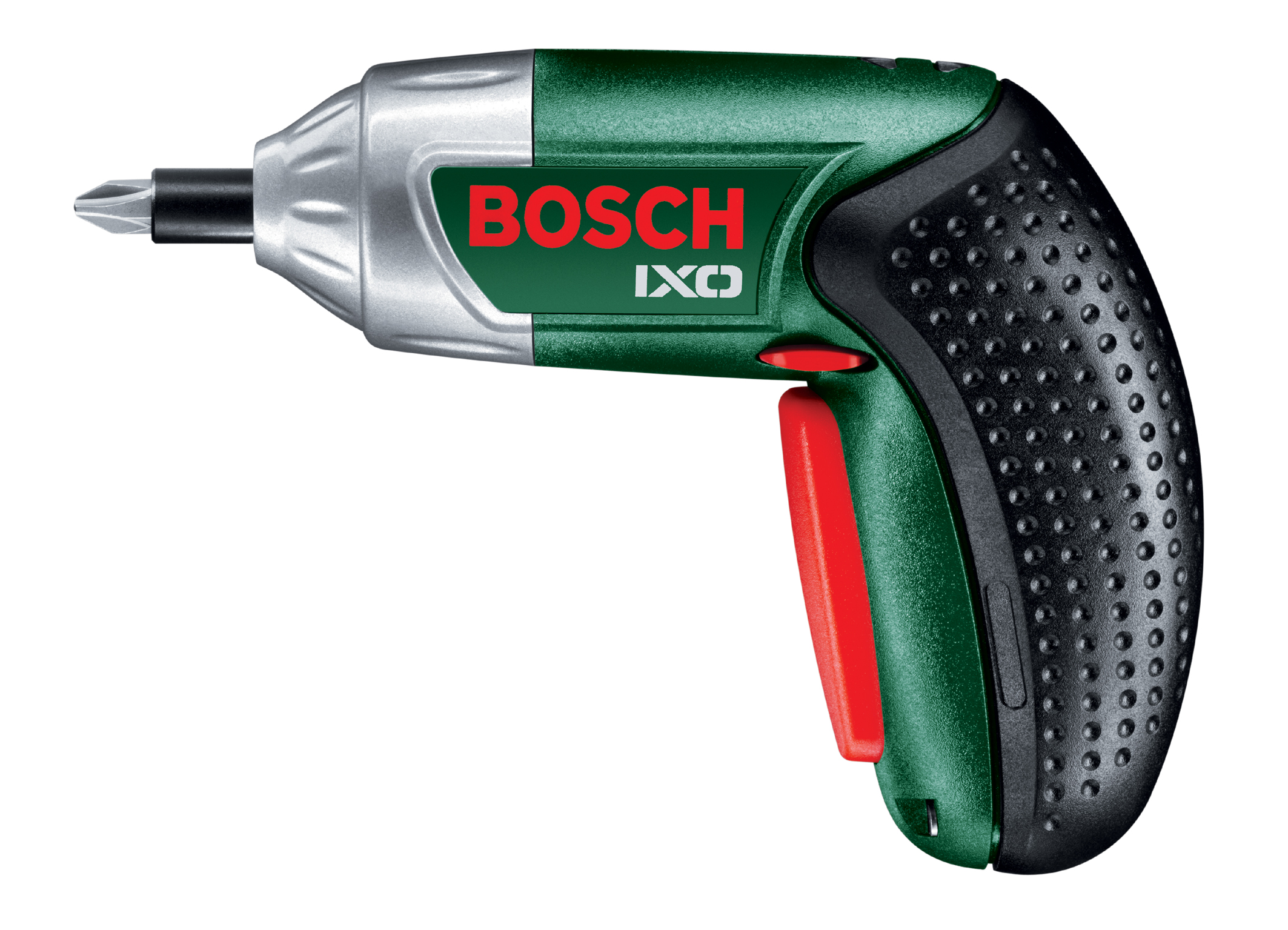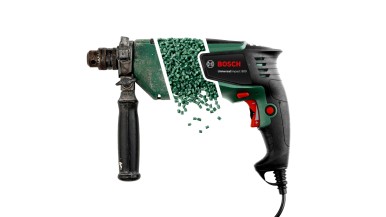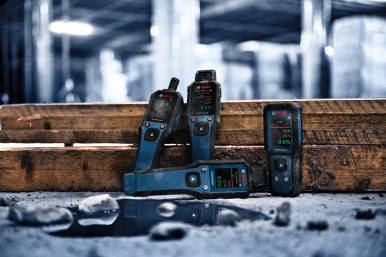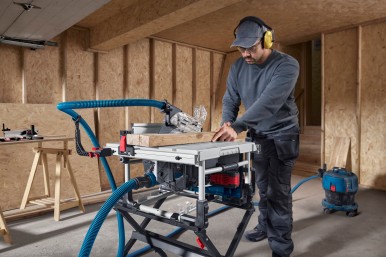Leinfelden – Bosch Power Tools launched the first cordless power tools on the market 50 years ago: a hedge cutter and a drill with a battery to hang over the shoulder. The battery, a 12 volt lead-gel battery, nowadays reminds of a car battery and weighed a proud 5.5 kilograms in 1969 ‒ the hedge cutter was therefore ready for use for one whole hour. It was possible to cut a hedge around 20 meters long. Afterwards, the hedge cutter had to be charged for a period of between six and eight hours. Bosch thereby laid the foundation for the development of numerous cordless power tools. “Our expertise in batteries has been a central element of the innovations in recent decades. We are shaping the technical development of the industry and constantly perform pioneering work,” said Henk Becker, President of the Robert Bosch Power Tools GmbH. “It is our claim to have the smallest and most powerful batteries on the market, to replace corded tools by cordless tools in the long term. Cordless tools make work easier for our users – whether at home, in the garden, in professional workshops or on construction sites.”
The Robert Bosch Power Tools GmbH, a division of the Bosch Group, is one of the world’s leading providers for power tools, garden tools, power tool accessories and measuring tools. In 2024, its 18,700 associates generated sales* of 5.1 billion euros, about 90 percent of which outside of Germany. With brands such as Bosch and Dremel, the division stands for customer focus and great engineering progress. The core success factors are innovative strength and pace of innovation. In 2025, Bosch Power Tools will again launch more than 100 new products onto the market in its four business segments power tools, outdoor and garden tools, accessories and measuring tools.
Due to a change in the allocation of sales within the Bosch Group, certain revenues from Bosch Power Tools will be accounted for differently in the future. As a result, sales in this division appear to have fallen significantly compared to the previous year, although there was no actual change in economic performance in this regard.
The Bosch Group is a leading global supplier of technology and services. It employs roughly 418,000 associates worldwide (as of December 31, 2024). The company generated sales of 90.3 billion euros in 2024. Its operations are divided into four business sectors: Mobility, Industrial Technology, Consumer Goods, and Energy and Building Technology. With its business activities, the company aims to use technology to help shape universal trends such as automation, electrification, digitalization, connectivity, and an orientation to sustainability. In this context, Bosch’s broad diversification across regions and industries strengthens its innovativeness and robustness. Bosch uses its proven expertise in sensor technology, software, and services to offer customers cross-domain solutions from a single source. It also applies its expertise in connectivity and artificial intelligence in order to develop and manufacture user-friendly, sustainable products. With technology that is “Invented for life,” Bosch wants to help improve quality of life and conserve natural resources. The Bosch Group comprises Robert Bosch GmbH and its roughly 490 subsidiary and regional companies in over 60 countries. Including sales and service partners, Bosch’s global manufacturing, engineering, and sales network covers nearly every country in the world. Bosch’s innovative strength is key to the company’s further development. At 136 locations across the globe, Bosch employs some 87,000 associates in research and development.
Additional information is available online at www.bosch.com, www.bosch-press.com.
